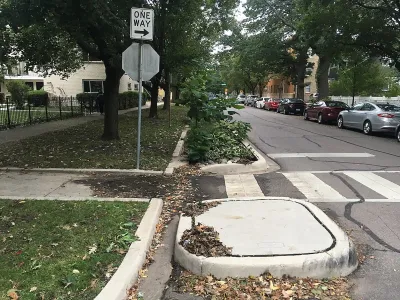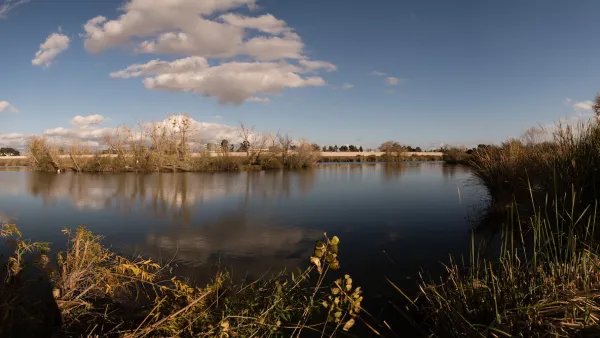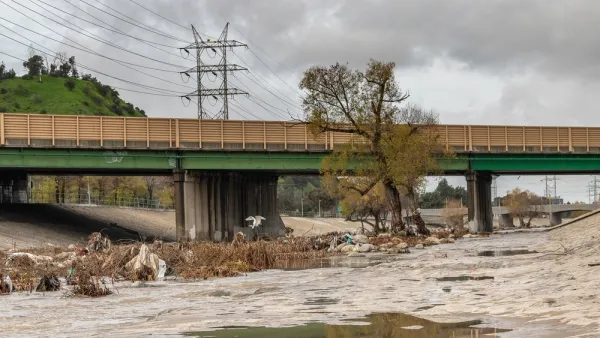Green infrastructure can help prevent flooding and replenish groundwater supplies, preventing subsidence that makes land sink.

According to an article by Matt Simon in Wired, U.S. cities could be capturing tens of billions of gallons of rainwater with more ‘spongy’ infrastructure.
A new report from the Pacific Institute indicates that urban areas generate almost 60 million acre-feet of stormwater runoff per year — much of which is diverted away from cities and into the ocean or other bodies of water. Reversing this approach to capture rainwater could help replenish groundwater resources and secure local water supplies.
Simon points to a recent report that Los Angeles captured 8.6 billion gallons of water in recent storms through a combination of green infrastructure methods. On the East Coast, cities are working to mitigate flooding through rain gardens, bioswales, and permeable pavement. “More cities are also adopting stormwater fees, charging landowners based on the amount of impervious surfaces on a property, thus encouraging them to open up more ground.”
FULL STORY: US Cities Could Be Capturing Billions of Gallons of Rain a Day

National Parks Layoffs Will Cause Communities to Lose Billions
Thousands of essential park workers were laid off this week, just before the busy spring break season.

Retro-silient?: America’s First “Eco-burb,” The Woodlands Turns 50
A master-planned community north of Houston offers lessons on green infrastructure and resilient design, but falls short of its founder’s lofty affordability and walkability goals.

Delivering for America Plan Will Downgrade Mail Service in at Least 49.5 Percent of Zip Codes
Republican and Democrat lawmakers criticize the plan for its disproportionate negative impact on rural communities.

Test News Post 1
This is a summary

Test News Headline 46
Test for the image on the front page.

Balancing Bombs and Butterflies: How the National Guard Protects a Rare Species
The National Guard at Fort Indiantown Gap uses GIS technology and land management strategies to balance military training with conservation efforts, ensuring the survival of the rare eastern regal fritillary butterfly.
Urban Design for Planners 1: Software Tools
This six-course series explores essential urban design concepts using open source software and equips planners with the tools they need to participate fully in the urban design process.
Planning for Universal Design
Learn the tools for implementing Universal Design in planning regulations.
EMC Planning Group, Inc.
Planetizen
Planetizen
Mpact (formerly Rail~Volution)
Great Falls Development Authority, Inc.
HUDs Office of Policy Development and Research
NYU Wagner Graduate School of Public Service





























